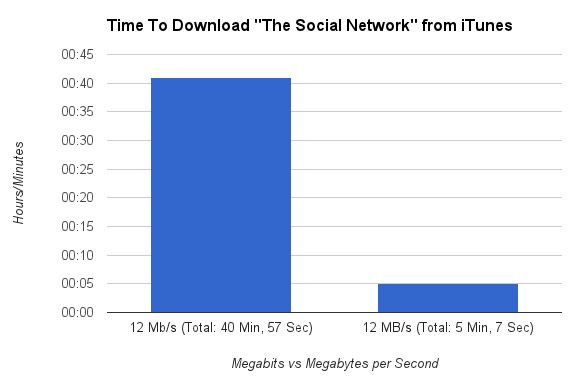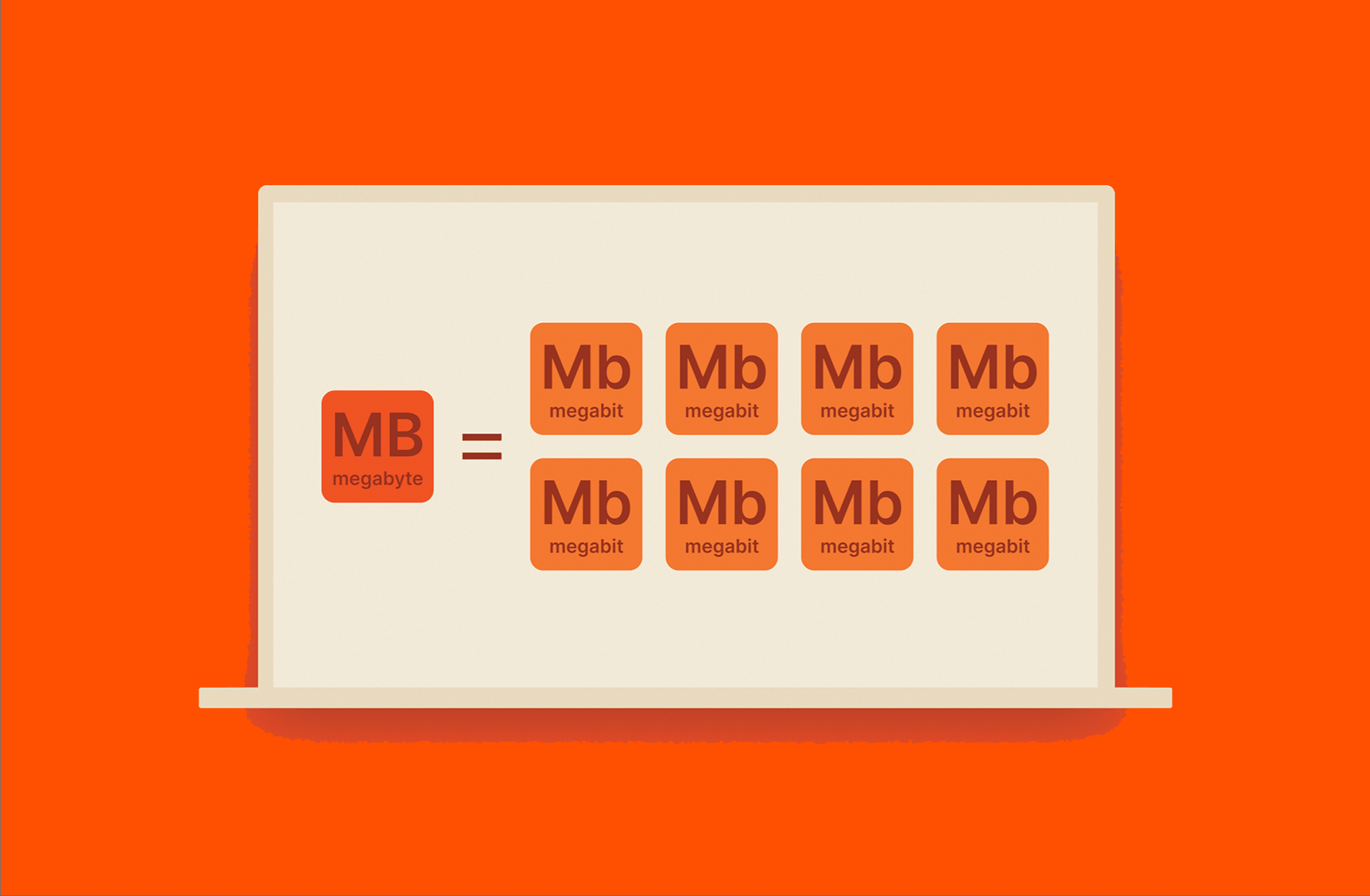The Future of Internet Speeds: Patterns in Megabits Per Second
The Future of Internet Speeds: Patterns in Megabits Per Second
Blog Article
Exactly How Megabits Per Second Effect Your Online Activities
The concept of megabits per second (Mbps) plays an essential role in forming our online experiences. As digital activities proliferate, comprehending the implications of Mbps on video gaming, video, and streaming conferencing becomes significantly crucial. Higher Mbps can improve performance and reduce disruptions, while inadequate rates may foster irritation and inadequacy. Examining your household's certain needs in relation to these speeds is vital, especially as multiple gadgets compete for transmission capacity. The subtleties of exactly how Mbps impacts different online activities warrant more expedition, especially as our dependence on digital connectivity proceeds to progress.
Comprehending Megabits Per Second
When taking into consideration internet rate, it's vital to understand the principle of megabits per second (Mbps), which serves as a conventional dimension for data transfer prices. This metric measures how much data can be transmitted over an internet link in one second, offering a clear understanding of efficiency abilities - Megabits Per Second. For context, one megabit is equivalent to one million little bits, and Mbps is commonly made use of to share data transfer for numerous on the internet tasks
A greater Mbps shows a much faster internet connection, enabling individuals to execute jobs such as downloading and install data, surfing web sites, and taking part in online pc gaming a lot more successfully. For circumstances, typical surfing requires around 1-5 Mbps, while streaming high-def video might demand 5-25 Mbps. Recognizing these requirements is important for figuring out the suitable web rate needed for certain tasks.
Additionally, the variety of gadgets connected to a network can impact total efficiency. Multiple users streaming, pc gaming, or downloading concurrently can strain available transmission capacity, leading to slower rates - Megabits Per Second. Reviewing personal online behaviors and requirements is important in selecting an internet strategy that lines up with one's requirements, ensuring a seamless digital experience
Streaming and Buffering Issues
Streaming high-definition content has ended up being a staple of modern on the internet entertainment, yet it is usually gone along with by frustrating buffering concerns. These interruptions can significantly interfere with the checking out experience, leading to dissatisfaction and prospective loss of target market interaction. Buffering takes place when the data transmitted from the streaming service is not obtained promptly sufficient to maintain a smooth playback, commonly because of inadequate web speed gauged in megabits per second (Mbps)

In addition, real-time streaming can be affected by network congestion, which occurs when several tools share the very same data transfer. Enhancing link rate and making sure sufficient Mbps is vital for a seamless streaming experience. As streaming solutions remain to progress, comprehending the effect of Mbps on buffering issues remains vital for customers looking for uninterrupted amusement.
Online Video Gaming Efficiency
The effect of net rate on on-line tasks expands past streaming, substantially influencing online gaming efficiency. In competitive video gaming, reduced latency and high data transfer are vital for a seamless experience. A fast link minimizes lag, allowing gamers to react swiftly to in-game occasions, which can be the difference between success and loss.
Transmission capacity, gauged in megabits per second (Mbps), plays an essential role in supporting numerous gadgets and video gaming systems at the same time. Not enough bandwidth can lead to went down links or reduced video game top quality, negatively influencing gameplay. For example, online multiplayer games require significant information transfer, particularly throughout peak video gaming hours when numerous gamers are online.
Hectic first-person shooters require greater speeds to keep responsiveness, while turn-based method games might work moderately well on reduced speeds. As on-line video gaming continues to progress, with enhancing graphical fidelity and even more complicated multiplayer atmospheres, the need for greater Mbps will only escalate.
Video Conferencing High Quality
In today's electronic landscape, video clip conferencing high quality is heavily affected by net speed, particularly in regards to Web Site data transfer and latency. High-grade video calls need enough data transfer to transmit audio and video data perfectly. Commonly, a minimum of 1.5 Mbps upload and download rates is suggested for common definition video clip, while high-definition video conferencing normally requires at the very least 3 Mbps.
Latency, or the hold-up in between sending and receiving information, also plays a vital role in the individual experience. Low latency ensures that conversations circulation normally without uncomfortable stops briefly or disruptions. Preferably, latency must be listed below 150 milliseconds for reliable communication. Greater latency can cause resemble, lag, and disjointed communications, which can impede collaboration and engagement during conferences.
Moreover, several participants in a video seminar can strain readily available bandwidth, requiring also greater speeds. Network congestion, usually brought on by synchronised tasks like streaming or downloading, can additionally weaken video clip top quality. Therefore, for organizations depending on video clip conferencing for remote collaboration, understanding the partnership in between megabits per second and total communication high quality is essential for preserving productivity and improving digital communications.
Choosing the Right Internet Plan
Choosing a suitable net strategy is important for guaranteeing optimum performance in various online tasks, specifically in settings that demand high transmission capacity, such as video conferencing and online video gaming. Megabits Per Second. When taking into consideration a net strategy, it is vital to review both the speed and information allocation to match your details use demands
For families with numerous individuals involving in synchronised tasks, a plan using higher megabits per second (Mbps) is advised. Usually, a minimum of 25 Mbps is ideal for basic streaming and surfing, while strategies surpassing 100 Mbps are more suitable for even more extensive tasks. Additionally, think about the nature of your online activities; video conferencing needs at least 1.5 Mbps submit rate, while online pc gaming may need a reduced latency however regular connection.
It is likewise crucial to evaluate your information cap. Limitless information plans can prevent throttling and interruptions, specifically if heavy use is anticipated. Study service suppliers in your location, as accessibility and pricing can differ. By thoughtfully selecting an internet strategy customized to your requirements, you can improve your on the internet experience, making certain smooth, undisturbed access to your favored activities.
Conclusion
In verdict, the value of megabits per second (Mbps) fit on-line activities can not be overstated. Greater Mbps assists in seamless streaming, minimizes buffering, improves pc gaming experiences, and makes certain top notch video conferencing. Conversely, insufficient bandwidth can result in aggravating disturbances and diminished efficiency throughout various jobs. A detailed understanding of private or family Mbps needs is vital for choosing a suitable internet strategy that sufficiently sustains varied online activities and customer check this site out demands.

Usually, a minimum of 25 Mbps is ideal for standard streaming and browsing, while plans surpassing 100 Mbps are more effective for more extensive jobs. In addition, consider the nature of your online tasks; video clip conferencing requires at the very least 1.5 Mbps upload rate, view while on-line video gaming might need a lower latency however regular link.
Report this page